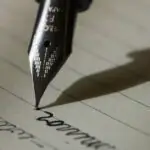
He Said, She Said: Tips for Editing Dialogue Tags
Dialogue tags can help readers keep track of who is speaking in writing. But many authors overuse or misuse dialogue tags. As an editor or proofreader, then, it is worth keeping an eye out for issues when working on a novel or any other writing that features dialogue.
In this post, we’ll look at common issues with dialogue tags and how to fix them.
What Are Dialogue Tags?
Dialogue tags tell us who is speaking in a passage of dialogue. For instance:“I haven’t a clue what a dialogue tag is,” said Derek.
This helps readers to follow conversations between characters. When editing a document that contains dialogue, you may need to check that they’re used effectively.
Typically, this will involve checking for minor typographical issues (e.g., making sure dialogue tags are punctuated correctly). But you might also need to look out for “elegant variation” in dialogue tags. This occurs when writers vary the verb used in tags too much.
Elegant Variation in Dialogue Tags
“Elegant variation” is an ironic name for overusing synonyms to avoid repeating words. In dialogue, this usually involves authors overusing synonyms for “said” and “asked”. Instead, their characters will whisper, shout, exclaim, grumble, moan, shriek, or other words.
Alternatively, it can involve using adverbs to modify “said” or “asked” (e.g., “she said happily”).
The passage below, for instance, was written to avoid overusing “said” and “asked”:
“How are you using dialogue tags in the manuscripts?” asked Samira.
“I haven’t a clue what a dialogue tag is,” Derek said eventually, after a few seconds spent thinking about how to respond to his editor.
“Really?” inquired Samira in a surprised voice. “But you’re a published author!” she continued.
“I am, yes,” Derek confirmed.
“And you don’t know what a dialogue tag is?” queried Samira.
“You don’t need to know the technical terms to write,” Derek replied nonchalantly. “You just need an idea for a story and to type one word at a time until it’s done,” he concluded.
“Well, I wish you’d at least try to learn more,” she sighed in an exasperated tone.
“Hey!” Derek exclaimed. “I don’t see why I’m the villain in this!” he said angrily. “Nobody reads a book for the punctuation. It’s the story and characters they care about.”
“It would just make my job a whole lot easier if you did,” Samira responded.
This is a fairly short passage, but even here the variation of terms feels a bit distracting. And over the course of a full manuscript, this kind of variation can be a problem.
Editing Dialogue Tags
Most professional editors favor a minimal approach to dialogue tags. This means:
- Only using dialogue tags when necessary to clarify who is speaking.
- Sticking to “said” and “asked” in most cases so the dialogue tags don’t distract from the dialogue itself (this also means other verbs have more impact when they are used).
- Where possible, using action to indicate who is speaking and how characters are feeling rather than stating this in the description (i.e., the “show, don’t tell” rule).
For example, we could rewrite the passage above in line with these rules:
“How are you using dialogue tags in the manuscripts?” asked Samira.
Derek paused, staring blankly at his editor. “I haven’t a clue what a dialogue tag is,” he said.
“Really?” Samira’s eyes widened in disbelief. “But you’re a published author!”
“I am, yes.”
“And you don’t know what a dialogue tag is?”
Derek lounged in his chair like a prince on a throne. “You don’t need to know the technical terms to write. You just need an idea for a story and to type one word at a time until it’s done.”
Despite herself, Samira sighed. “Well, I wish you’d at least try to learn.”
At this the author sat bolt upright, glowering at Samira. “Hey! I don’t see why I’m the villain in this! Nobody reads a book for the punctuation. It’s the story and characters they care about.”
“It would just make my job a whole lot easier if you did,” she replied.
Here, we’ve cut a lot of the unnecessary dialogue tags, making the passage easier to read. We’ve also put more emphasis on the action, such as referring to a character’s eyes widening rather than simply stating that she spoke “in a surprised voice,” which can be more engaging.
When Should You Edit Dialogue Tags?
A minimal approach to dialogue tags can make dialogue easier to read, as hopefully we have shown above. But the kind of substantive changes we’ve made in the examples in this post would be far beyond your average proofreading brief!
You may be able to make some edits directly when proofreading or copy editing, but changing dialogue tags or adding action would usually fall under substantive editing.
Thus, unless your brief permits rewriting the document, it is better to just highlight issues with dialogue for your client. This might be to recommend a lighter touch, such as shown above. Or it could be to add dialogue tags or action in places where it isn’t clear who is speaking.
Whatever the issue, you can leave a comment politely explaining the problem and suggesting a solution. Your client can then make any changes they feel to be appropriate.
Becoming A Proofreader
For much more on proofreading, including a module on creative writing, our Becoming A Proofreader course has you covered. You can even try it for free before you buy.



Leave a Comment
Your email address will not be published.